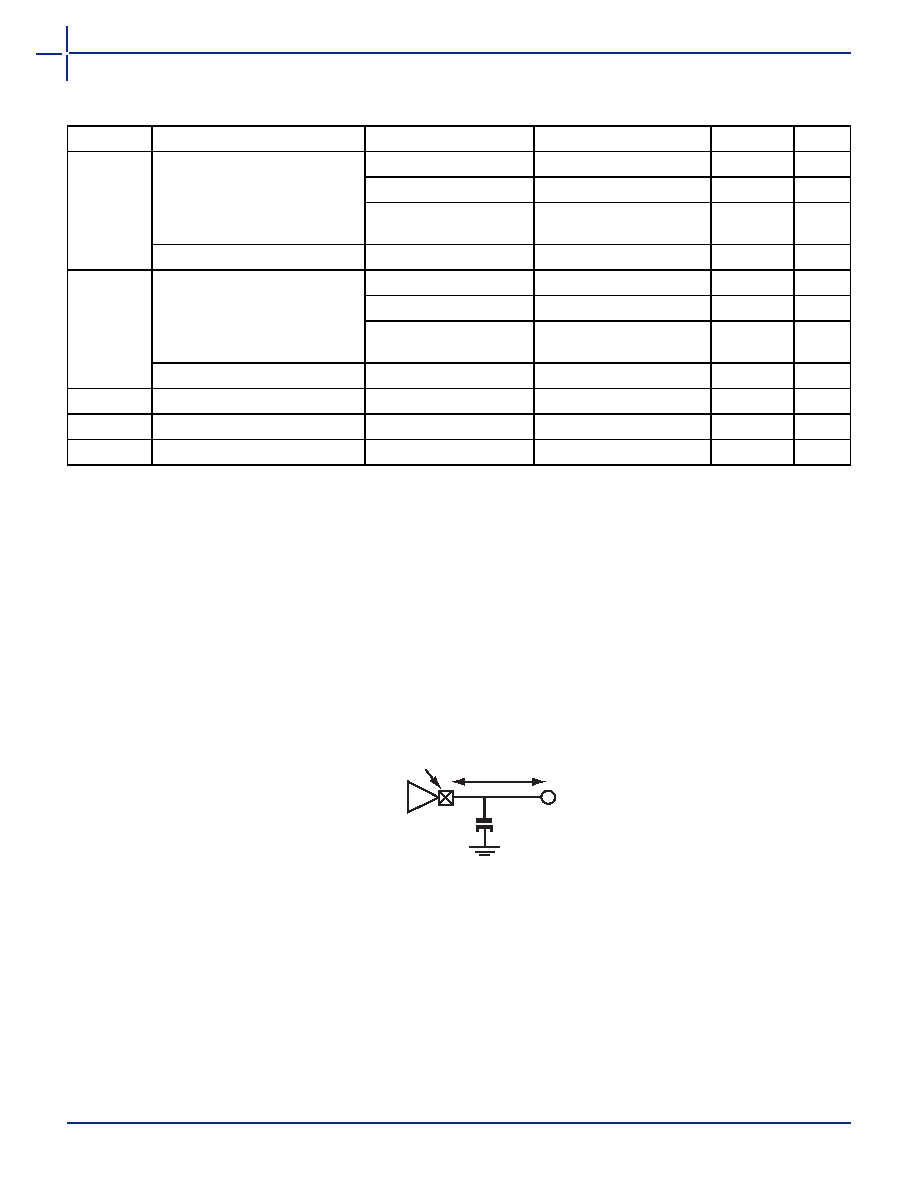- 您現(xiàn)在的位置:買賣IC網(wǎng) > PDF目錄4475 > A54SX16A-1FG144I (Microsemi SoC)IC FPGA SX 24K GATES 144-FBGA PDF資料下載
參數(shù)資料
| 型號(hào): | A54SX16A-1FG144I |
| 廠商: | Microsemi SoC |
| 文件頁(yè)數(shù): | 26/108頁(yè) |
| 文件大?。?/td> | 0K |
| 描述: | IC FPGA SX 24K GATES 144-FBGA |
| 標(biāo)準(zhǔn)包裝: | 160 |
| 系列: | SX-A |
| LAB/CLB數(shù): | 1452 |
| 輸入/輸出數(shù): | 111 |
| 門數(shù): | 24000 |
| 電源電壓: | 2.25 V ~ 5.25 V |
| 安裝類型: | 表面貼裝 |
| 工作溫度: | -40°C ~ 85°C |
| 封裝/外殼: | 144-LBGA |
| 供應(yīng)商設(shè)備封裝: | 144-FPBGA(13x13) |
第1頁(yè)第2頁(yè)第3頁(yè)第4頁(yè)第5頁(yè)第6頁(yè)第7頁(yè)第8頁(yè)第9頁(yè)第10頁(yè)第11頁(yè)第12頁(yè)第13頁(yè)第14頁(yè)第15頁(yè)第16頁(yè)第17頁(yè)第18頁(yè)第19頁(yè)第20頁(yè)第21頁(yè)第22頁(yè)第23頁(yè)第24頁(yè)第25頁(yè)當(dāng)前第26頁(yè)第27頁(yè)第28頁(yè)第29頁(yè)第30頁(yè)第31頁(yè)第32頁(yè)第33頁(yè)第34頁(yè)第35頁(yè)第36頁(yè)第37頁(yè)第38頁(yè)第39頁(yè)第40頁(yè)第41頁(yè)第42頁(yè)第43頁(yè)第44頁(yè)第45頁(yè)第46頁(yè)第47頁(yè)第48頁(yè)第49頁(yè)第50頁(yè)第51頁(yè)第52頁(yè)第53頁(yè)第54頁(yè)第55頁(yè)第56頁(yè)第57頁(yè)第58頁(yè)第59頁(yè)第60頁(yè)第61頁(yè)第62頁(yè)第63頁(yè)第64頁(yè)第65頁(yè)第66頁(yè)第67頁(yè)第68頁(yè)第69頁(yè)第70頁(yè)第71頁(yè)第72頁(yè)第73頁(yè)第74頁(yè)第75頁(yè)第76頁(yè)第77頁(yè)第78頁(yè)第79頁(yè)第80頁(yè)第81頁(yè)第82頁(yè)第83頁(yè)第84頁(yè)第85頁(yè)第86頁(yè)第87頁(yè)第88頁(yè)第89頁(yè)第90頁(yè)第91頁(yè)第92頁(yè)第93頁(yè)第94頁(yè)第95頁(yè)第96頁(yè)第97頁(yè)第98頁(yè)第99頁(yè)第100頁(yè)第101頁(yè)第102頁(yè)第103頁(yè)第104頁(yè)第105頁(yè)第106頁(yè)第107頁(yè)第108頁(yè)

SX-A Family FPGAs
2- 4
v5.3
Table 2-8 AC Specifications (5 V PCI Operation)
Symbol
Parameter
Condition
Min.
Max.
Units
IOH(AC)
Switching Current High
0 < VOUT ≤ 1.4
1
–44
–
mA
1.4
≤ V
OUT < 2.4
1, 2
(–44 + (VOUT – 1.4)/0.024)
–
mA
3.1 < VOUT < VCCI
1, 3
–
–
(Test Point)
VOUT = 3.1
3
––142
mA
IOL(AC)
Switching Current Low
VOUT ≥ 2.2
1
95
–
mA
2.2 > VOUT > 0.55
1
(VOUT/0.023)
–
mA
0.71 > VOUT > 0
1, 3
–
–
(Test Point)
VOUT = 0.71
3
–
206
mA
ICL
Low Clamp Current
–5 < VIN ≤ –1
–25 + (VIN + 1)/0.015
–
mA
slewR
Output Rise Slew Rate
0.4 V to 2.4 V load 4
15
V/ns
slewF
Output Fall Slew Rate
2.4 V to 0.4 V load 4
15
V/ns
Notes:
1. Refer to the V/I curves in Figure 2-1 on page 2-5. Switching current characteristics for REQ# and GNT# are permitted to be one half
of that specified here; i.e., half size output drivers may be used on these signals. This specification does not apply to CLK and RST#,
which are system outputs. “Switching Current High” specifications are not relevant to SERR#, INTA#, INTB#, INTC#, and INTD#,
which are open drain outputs.
2. Note that this segment of the minimum current curve is drawn from the AC drive point directly to the DC drive point rather than
toward the voltage rail (as is done in the pull-down curve). This difference is intended to allow for an optional N-channel pull-up.
3. Maximum current requirements must be met as drivers pull beyond the last step voltage. Equations defining these maximums (A
and B) are provided with the respective diagrams in Figure 2-1 on page 2-5. The equation defined maximum should be met by
design. In order to facilitate component testing, a maximum current test point is defined for each side of the output driver.
4. This parameter is to be interpreted as the cumulative edge rate across the specified range, rather than the instantaneous rate at any
point within the transition range. The specified load (diagram below) is optional; i.e., the designer may elect to meet this parameter
with an unloaded output per revision 2.0 of the PCI Local Bus Specification. However, adherence to both maximum and minimum
parameters is now required (the maximum is no longer simply a guideline). Since adherence to the maximum slew rate was not
required prior to revision 2.1 of the specification, there may be components in the market for some time that have faster edge
rates; therefore, motherboard designers must bear in mind that rise and fall times faster than this specification could occur and
should ensure that signal integrity modeling accounts for this. Rise slew rate does not apply to open drain outputs.
Output
Buffer
1/2 in. max.
50 pF
Pin
相關(guān)PDF資料 |
PDF描述 |
|---|---|
| ASM30DTMT | CONN EDGECARD 60POS R/A .156 SLD |
| A54SX08A-2FGG144I | IC FPGA SX 12K GATES 144-FBGA |
| AYM30DTMT | CONN EDGECARD 60POS R/A .156 SLD |
| A54SX16A-1FGG144I | IC FPGA SX 24K GATES 144-FBGA |
| A54SX08A-2FG144I | IC FPGA SX 12K GATES 144-FBGA |
相關(guān)代理商/技術(shù)參數(shù) |
參數(shù)描述 |
|---|---|
| A54SX16A-1FG144M | 制造商:Microsemi Corporation 功能描述:FPGA SX-A 16K GATES 924 CELLS 263MHZ 0.25UM/0.22UM 2.5V 144F - Trays 制造商:Microsemi Corporation 功能描述:IC FPGA 111 I/O 144FBGA |
| A54SX16A-1FG256 | 功能描述:IC FPGA SX 24K GATES 256-FBGA RoHS:否 類別:集成電路 (IC) >> 嵌入式 - FPGA(現(xiàn)場(chǎng)可編程門陣列) 系列:SX-A 標(biāo)準(zhǔn)包裝:90 系列:ProASIC3 LAB/CLB數(shù):- 邏輯元件/單元數(shù):- RAM 位總計(jì):36864 輸入/輸出數(shù):157 門數(shù):250000 電源電壓:1.425 V ~ 1.575 V 安裝類型:表面貼裝 工作溫度:-40°C ~ 125°C 封裝/外殼:256-LBGA 供應(yīng)商設(shè)備封裝:256-FPBGA(17x17) |
| A54SX16A-1FG256I | 功能描述:IC FPGA SX 24K GATES 256-FBGA RoHS:否 類別:集成電路 (IC) >> 嵌入式 - FPGA(現(xiàn)場(chǎng)可編程門陣列) 系列:SX-A 標(biāo)準(zhǔn)包裝:40 系列:SX-A LAB/CLB數(shù):6036 邏輯元件/單元數(shù):- RAM 位總計(jì):- 輸入/輸出數(shù):360 門數(shù):108000 電源電壓:2.25 V ~ 5.25 V 安裝類型:表面貼裝 工作溫度:0°C ~ 70°C 封裝/外殼:484-BGA 供應(yīng)商設(shè)備封裝:484-FPBGA(27X27) |
| A54SX16A-1FG256M | 制造商:Microsemi Corporation 功能描述:FPGA SX-A 16K GATES 924 CELLS 263MHZ 0.25UM/0.22UM 2.5V 256F - Trays 制造商:Microsemi Corporation 功能描述:IC FPGA 180 I/O 256FBGA |
| A54SX16A-1FGG144 | 功能描述:IC FPGA SX 24K GATES 144-FBGA RoHS:否 類別:集成電路 (IC) >> 嵌入式 - FPGA(現(xiàn)場(chǎng)可編程門陣列) 系列:SX-A 標(biāo)準(zhǔn)包裝:90 系列:ProASIC3 LAB/CLB數(shù):- 邏輯元件/單元數(shù):- RAM 位總計(jì):36864 輸入/輸出數(shù):157 門數(shù):250000 電源電壓:1.425 V ~ 1.575 V 安裝類型:表面貼裝 工作溫度:-40°C ~ 125°C 封裝/外殼:256-LBGA 供應(yīng)商設(shè)備封裝:256-FPBGA(17x17) |
發(fā)布緊急采購(gòu),3分鐘左右您將得到回復(fù)。